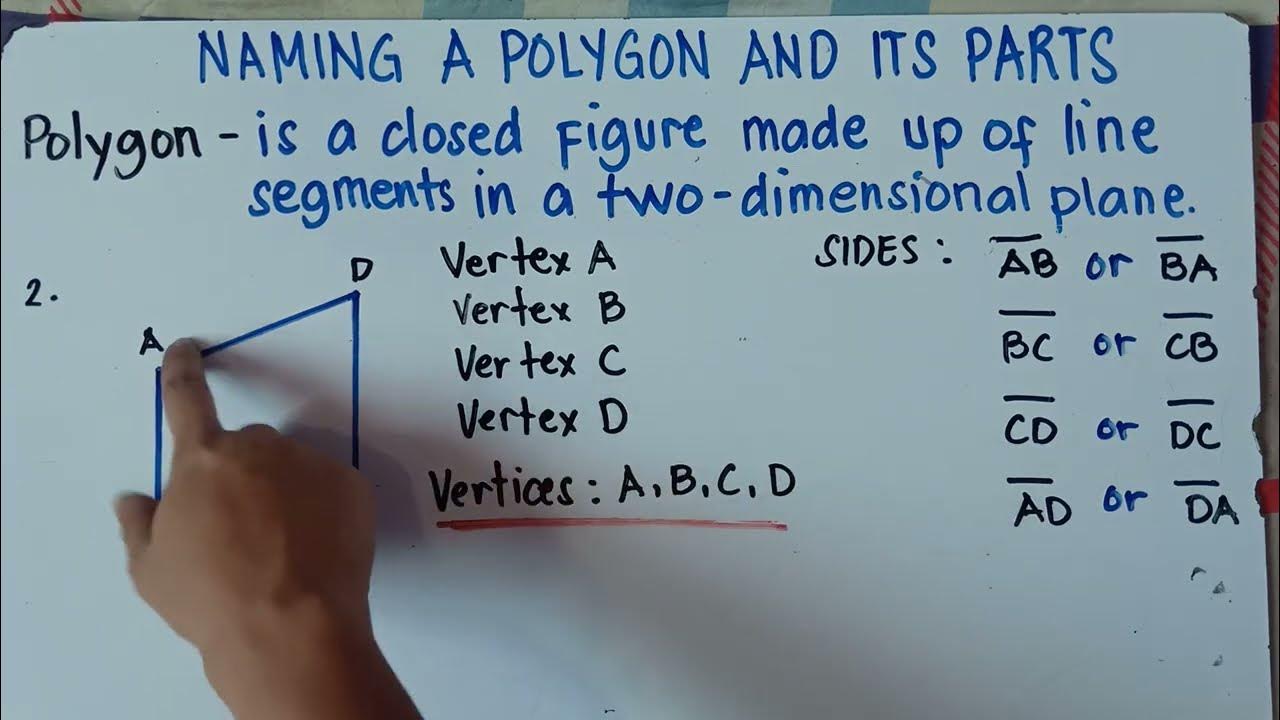POLÍGONOS | RÁPIDO e FÁCIL
Summary
TLDRThis video provides a comprehensive lesson on polygons, explaining key concepts such as sides, vertices, diagonals, and angles (both internal and external). It covers the classification of polygons based on the number of sides, including triangles, quadrilaterals, pentagons, and more. The video also introduces important formulas to calculate the number of diagonals, the sum of internal and external angles, and how to find the internal and external angles of regular polygons. Engaging tips and tricks are shared throughout, including how to identify convex and concave polygons and perform calculations for specific shapes like hexagons and nonagons.
Takeaways
- 😀 A polygon is a closed, flat figure made up of straight line segments.
- 😀 The elements of a polygon include sides, vertices, diagonals, and angles (internal and external).
- 😀 The number of vertices in a polygon is equal to the number of sides.
- 😀 Diagonals connect non-adjacent vertices within a polygon, and the number of diagonals can be calculated using the formula: (n(n-3))/2, where n is the number of sides.
- 😀 Internal angles of a polygon are the angles formed within the figure at the vertices, while external angles are formed by extending the sides.
- 😀 A convex polygon has no diagonals passing outside the figure, while a concave polygon has at least one diagonal that does pass outside.
- 😀 Polygons are named based on the number of sides: triangle (3), quadrilateral (4), pentagon (5), hexagon (6), octagon (8), eneágono (9), and icoságono (20).
- 😀 The sum of the internal angles of a polygon can be calculated with the formula: (n-2) * 180°, where n is the number of sides.
- 😀 The sum of the external angles of any polygon is always 360°.
- 😀 For a regular polygon, the internal angle can be found by dividing the sum of the internal angles by the number of sides, and the external angle can be found by dividing 360° by the number of sides.
Q & A
What is a polygon?
-A polygon is a flat, closed figure formed by straight line segments, where the segments meet at vertices.
What are the elements of a polygon?
-The elements of a polygon include the sides (line segments), vertices (points where the segments meet), and diagonals (line segments connecting non-adjacent vertices).
What is the relationship between the number of sides and vertices of a polygon?
-The number of vertices of a polygon is always equal to the number of sides.
What is a diagonal in a polygon?
-A diagonal is a line segment that connects two non-adjacent vertices in a polygon.
What are the differences between internal and external angles of a polygon?
-Internal angles are the angles formed inside the polygon at the vertices, while external angles are formed when the sides of the polygon are extended outside the shape.
What is the difference between concave and convex polygons?
-A convex polygon has no inward curvatures, while a concave polygon has at least one inward curvature (a 'dent' or 'hole').
How can we calculate the number of diagonals in a polygon?
-The number of diagonals in a polygon is calculated using the formula: (n * (n - 3)) / 2, where n is the number of sides.
What is the formula for calculating the sum of the internal angles of a polygon?
-The sum of the internal angles of a polygon is calculated using the formula: 180 * (n - 2), where n is the number of sides.
How do you calculate the internal angle of a regular polygon?
-The internal angle of a regular polygon can be found by dividing the sum of internal angles (180 * (n - 2)) by the number of sides (n).
How do you calculate the external angle of a regular polygon?
-The external angle of a regular polygon is calculated by dividing 360 degrees by the number of sides (n).
Outlines

Этот раздел доступен только подписчикам платных тарифов. Пожалуйста, перейдите на платный тариф для доступа.
Перейти на платный тарифMindmap

Этот раздел доступен только подписчикам платных тарифов. Пожалуйста, перейдите на платный тариф для доступа.
Перейти на платный тарифKeywords

Этот раздел доступен только подписчикам платных тарифов. Пожалуйста, перейдите на платный тариф для доступа.
Перейти на платный тарифHighlights

Этот раздел доступен только подписчикам платных тарифов. Пожалуйста, перейдите на платный тариф для доступа.
Перейти на платный тарифTranscripts

Этот раздел доступен только подписчикам платных тарифов. Пожалуйста, перейдите на платный тариф для доступа.
Перейти на платный тарифПосмотреть больше похожих видео

Math Antics - Polygons

Naming a Polygon and Its Parts | Matatag Curriculum | Grade 7 | Explain in Detailed |

Matematika Kelas 8 Bab 4 - Sudut Luar Segi Banyak - hal. 113 - 114 - Kurikulum Merdeka

SOMA DOS ÂNGULOS EXTERNOS DE UM POLÍGONO CONVEXO \Prof. Gis/ #10

Grade 7 Classify and illustrate polygons first quarter week 1 #kindsofpolygon #polygon #matatag

Classify Polygons According to Number of Sides, Convex and Non-Convex | Grade 7 Mathematics | Q1 W1
5.0 / 5 (0 votes)
